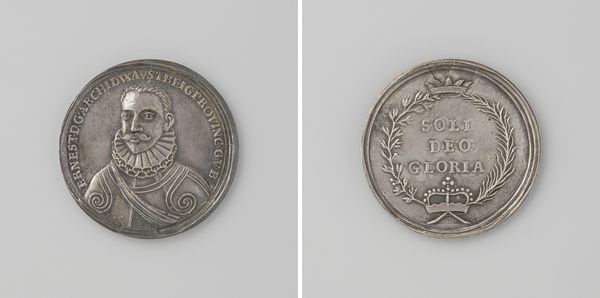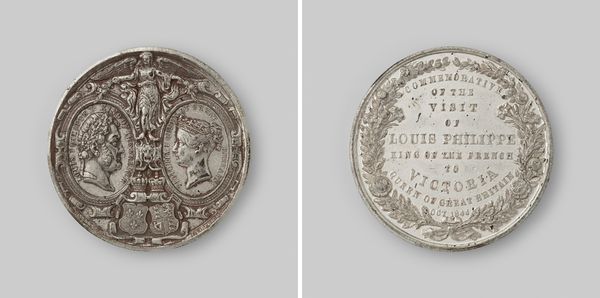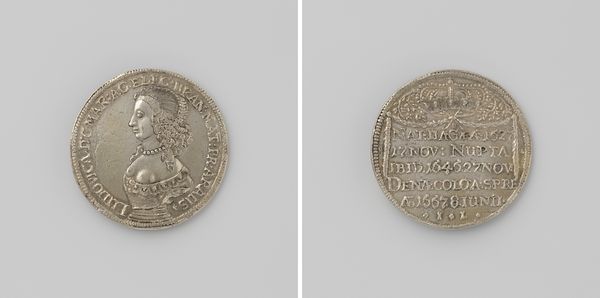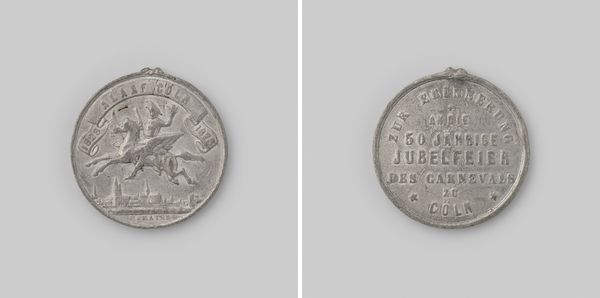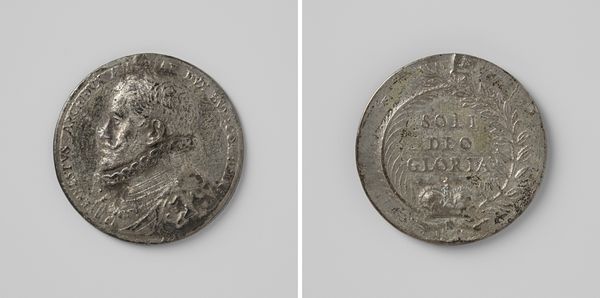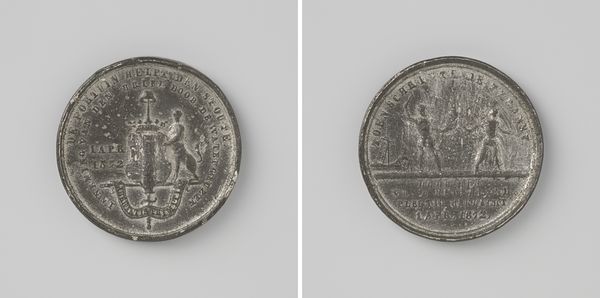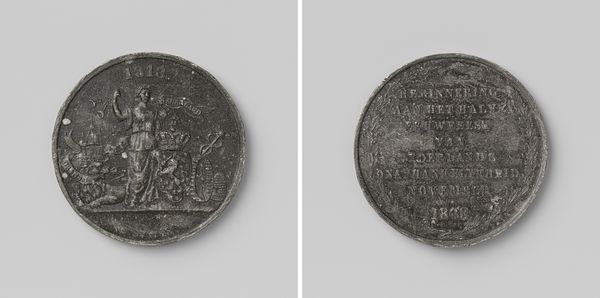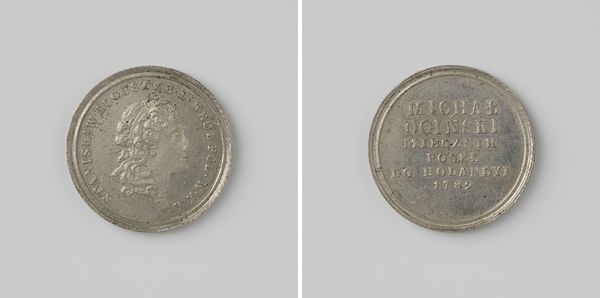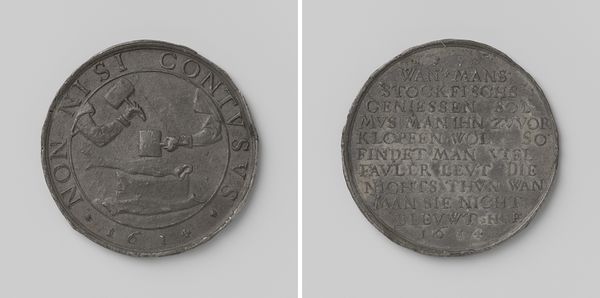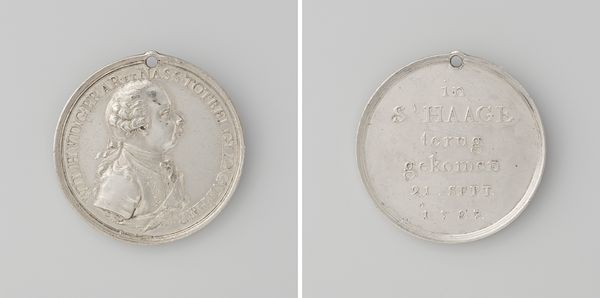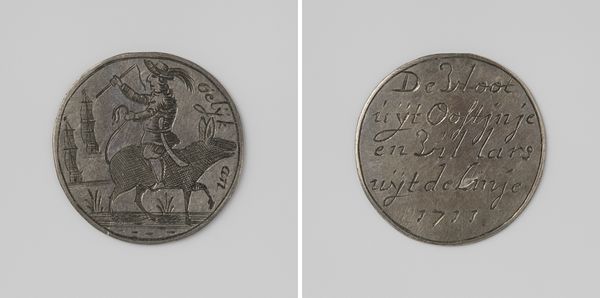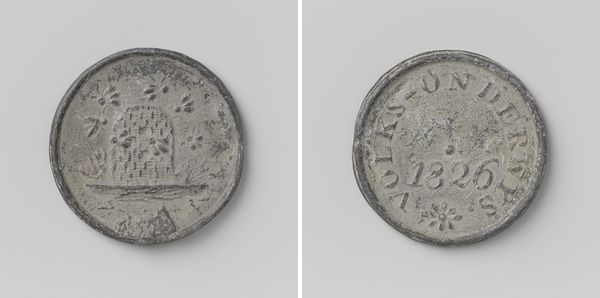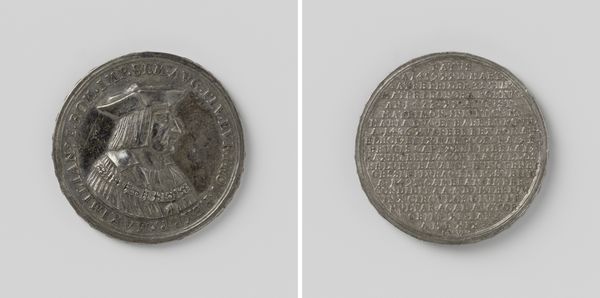
Verzet van Martin Luther tegen de verkoop van aflaatbrieven door de monnik Tetzel op last van paus Leo X 1517
0:00
0:00
silver, print, relief
#
portrait
#
medieval
#
silver
# print
#
relief
#
11_renaissance
#
history-painting
Dimensions: diameter 4.5 cm, weight 22.79 gr
Copyright: Rijks Museum: Open Domain
Editor: So, this intriguing silver print is called "Verzet van Martin Luther tegen de verkoop van aflaatbrieven door de monnik Tetzel op last van paus Leo X," created anonymously in 1517. I'm struck by how something so small captures such a momentous clash of ideologies. What historical perspectives does this piece bring to light for you? Curator: This small piece reflects immense cultural and political tensions. The print references Martin Luther's opposition to the sale of indulgences authorized by Pope Leo X, a pivotal moment kicking off the Protestant Reformation. Its creation and distribution served a crucial role in shaping public opinion, didn’t it? How do you see the medium influencing its message? Editor: That’s a great question. Well, being a print, it must have been more easily reproducible and widely distributed compared to, say, a painting. So, in a way, its form echoes the Reformation's aims of broader access to religious understanding. Curator: Precisely. And that broader access reshaped social and religious institutions in Europe. Think about it: the imagery on the print serves not only to depict an event, but also to promote a viewpoint, solidify identities and ultimately contribute to profound societal shifts. Considering the image presents two sides, how are those figures depicted in this very biased socio-political climate of the time? Editor: Looking closely, there's definitely a sense of...discomfort in Leo X's portrait and there's this defiant inscription relating to Luther's challenge! That's pretty compelling when contrasted like this. Curator: Absolutely. These types of visual polemics circulated widely. In studying objects like this, we witness how images became instruments of religious and political transformation. I never cease to find that absolutely astonishing. Editor: That makes me think about how art continues to shape social discourse, and that understanding its historical role offers ways for contemporary artists to navigate today’s pressing issues. Curator: I agree. Examining visual culture gives us insights into how beliefs, power structures, and lived realities intersect in the human story.
Comments
No comments
Be the first to comment and join the conversation on the ultimate creative platform.
